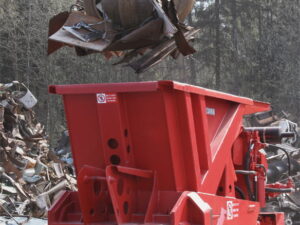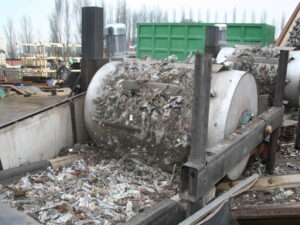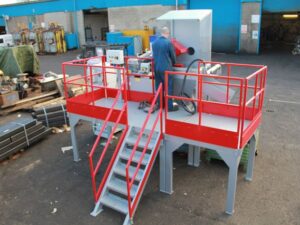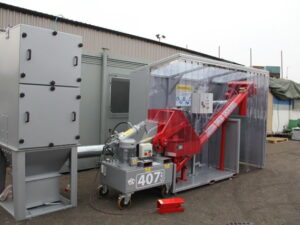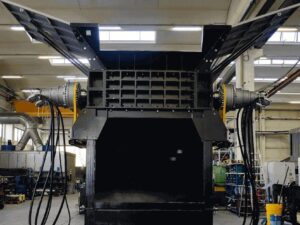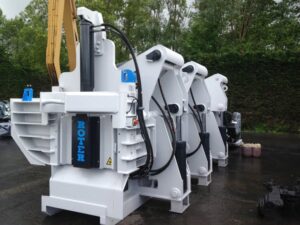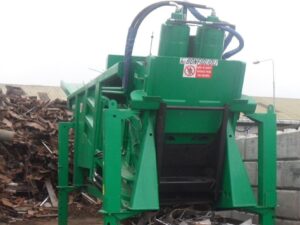At JMC Recycling, we are driven by the belief that car recycling represents a critical path towards achieving environmental sustainability and resource efficiency.
Our commitment to innovation in recycling processes enables us to transform end-of-life vehicles into valuable resources, reducing the demand for virgin materials and minimising waste.
The Car Recycling Process
Car recycling is a comprehensive and detailed process that plays a crucial role in environmental conservation and resource management. The journey from an end-of-life vehicle to reusable materials involves several key stages, each critical for ensuring the efficiency and sustainability of the recycling process.
1. Collection and Transportation
The first step in car recycling is the collection of end-of-life vehicles from various sources, including insurance write-offs, end-of-life vehicle directives, and individual owners. These vehicles are then transported to recycling facilities, where they undergo initial assessment for parts that can be reused or recycled.
2. Depollution
Before dismantling, vehicles are depolluted, a process critical for environmental safety. This involves the removal of all hazardous materials, including batteries, air conditioning refrigerants, engine oils, fuel, and other fluids. Depollution ensures these substances are handled and disposed of in compliance with environmental standards, preventing potential contamination.
3. Dismantling
After depollution, vehicles are systematically dismantled. Reusable parts, such as engines, transmissions, and electronic components, are carefully removed for resale or remanufacturing. This stage maximises the recovery of valuable components, supporting a circular economy by extending the life cycle of parts.
4. Shredding
The remaining vehicle shell, now stripped of reusable parts and hazardous materials, proceeds to the shredder. The shredding process breaks down the vehicle into smaller pieces, facilitating the separation of metals from non-metallic materials. The efficiency of shredding technology significantly influences the recovery rate of recyclable materials.
5. Material Separation
Following shredding, the mixed materials undergo several separation processes. Magnetic separation extracts ferrous metals, while advanced sorting technologies like eddy current separators and density-based separators are used to recover non-ferrous metals such as aluminium and copper. Non-metallic materials, such as plastics and glass, are also separated for recycling or energy recovery.
5. Recycling and Repurposing
The separated materials are then sent to various recycling streams. Metals are melted and purified for use in new manufacturing processes, reducing the need for virgin materials and conserving energy. Non-metallic materials are either recycled into new products or used in energy recovery processes, further supporting sustainability goals.
This intricate and efficient process not only contributes to significant environmental benefits by reducing waste and conserving resources but also plays a pivotal role in the automotive industry’s supply chain, providing materials for new vehicles and other products.
Car Recycling Case Studies
Uncover the real impact of car recycling through our curated selection of case studies and testimonials. These examples illuminate our dedication to setting industry standards and navigating the complexities of car recycling with unparalleled expertise.
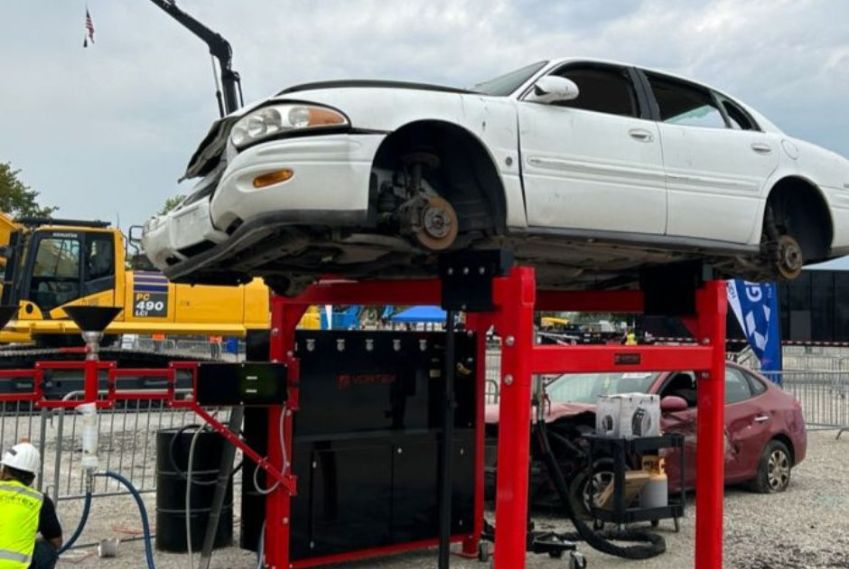
Car Recycling Equipment and Technology
At the core of car recycling’s success are the innovative technologies and equipment we employ. By investing in cutting-edge machinery for depollution, dismantling, and material separation, JMC Recycling drives the efficiency and sustainability of the car recycling process.
Advanced Depollution Systems: Safely remove hazardous materials, ensuring environmental compliance and safety.
High-Precision Dismantling Tools: Enable the meticulous separation of reusable parts, maximising resource recovery.
State-of-the-Art Shredders and Separators: Break down and sort materials with unmatched efficiency, enhancing the recovery of valuable metals and reducing waste.
Car Recycling FAQs
Have questions about car recycling? Dive into our FAQs for concise, informative answers.
What types of car recycling equipment are essential for starting a recycling operation?
Starting a car recycling operation requires a variety of equipment, each designed for specific stages of the process. Essential machinery includes depollution systems for safely removing hazardous materials, vehicle dismantlers for efficient component separation, shredders to break down the vehicle body, and sorting technologies for metal separation.
Can JMC car recycling equipment handle different types of vehicles?
Yes, our car recycling equipment is designed to accommodate a wide range of vehicles, from passenger cars to light commercial vehicles. The versatility of this equipment allows recyclers to process various types of vehicles, maximising the recovery of valuable materials and parts. Advanced technologies enable the adjustment of processes to suit different vehicle sizes and material compositions.
What safety features should I look for in car recycling equipment?
When selecting car recycling equipment, prioritising safety features is crucial to ensure the well-being of operators and compliance with health and safety regulations. Look for equipment that includes emergency stop functions, safety guards or barriers to protect operators from moving parts, and lockout/tagout systems for safe maintenance.
What is the lifespan of car recycling equipment, and how can it be extended?
The lifespan of car recycling equipment varies based on the type of machinery, frequency of use, and maintenance practices. Generally, well-maintained equipment can last for many years. To extend the lifespan of your equipment, adhere to the manufacturer’s recommended maintenance schedule, including regular inspections, timely replacement of worn parts, and proper cleaning.
Training your staff on proper operation techniques can also minimise wear and tear. Investing in high-quality equipment from reputable manufacturers can provide longer durability and better performance, ultimately offering a better return on investment.
Related Products
-

Fuel extraction systems from Vortex
-
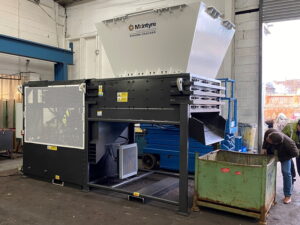
McIntyre 1300 Engine Cracker (USED)
-
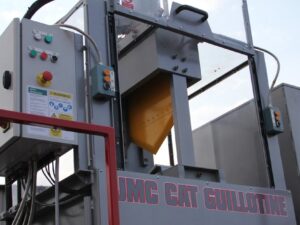
McIntyre CAT Guillotine (USED)
-

Roter RR5 (2000h) Car Baler (USED) – SOLD
-
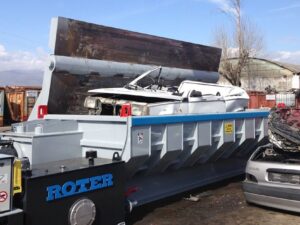
Roter RR6 Car Baler (USED)
-
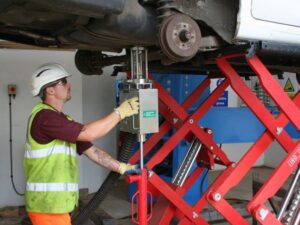
Vortex Depollution Systems
-
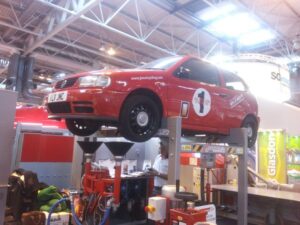
Vortex Mobile Combi System
-
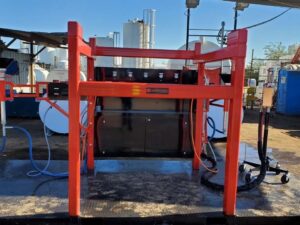
Vortex Mobile Combi System (USED)
-

Vortex Mobile Fuel Tool (USED)
-
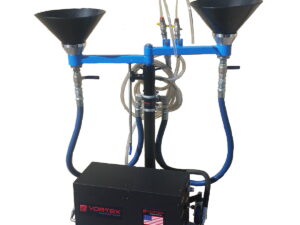
Vortex Mobile Oil and Coolant Tool (USED)
Contact Our Car Recycling Experts
For further enquiries or to learn more about JMC Recycling’s products, contact us now. Whether you prefer a direct conversation or filling out a form, we’re here to facilitate easy communication.
Compliance with Environmental and Safety Standards
Ensuring compliance with environmental and safety standards is crucial for the car recycling industry, focusing on reducing the ecological impact and promoting sustainable practices.
Key Considerations for Compliance:
Emissions Management: Effective emissions control is vital in car recycling operations to minimise the release of pollutants. Adhering to air quality standards is essential, highlighting the importance of advanced filtration and emissions reduction technologies within the industry.
Energy Conservation: Car recycling processes demand significant energy, particularly in parts dismantling and material processing. Emphasising energy-efficient practices and technologies helps reduce the industry’s carbon footprint and aligns with broader environmental goals.
Water Quality Protection: The treatment and management of wastewater generated during car recycling are critical to preventing water pollution. Industry standards necessitate the implementation of sophisticated water treatment solutions to ensure compliance with environmental regulations.
Safe Handling of Hazardous Materials: Proper management of hazardous substances removed from vehicles, such as batteries and fluids, is paramount. The industry must follow stringent protocols for the handling, storage, and disposal of these materials to prevent contamination and ensure public safety.




